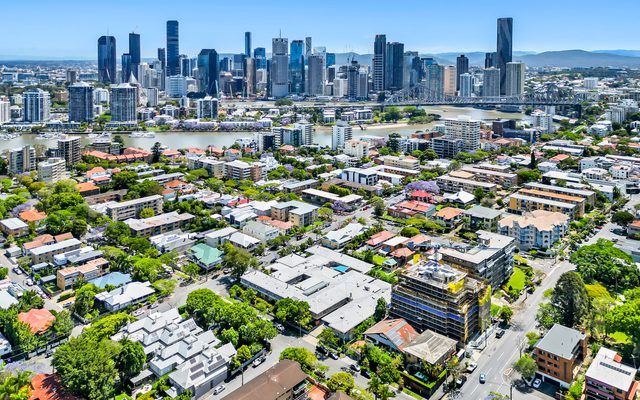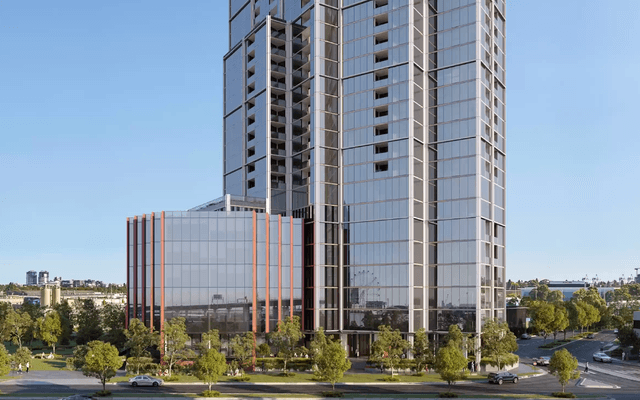This article is from the Australian Property Journal archive
AFTER a markedly more positive performance over 2020 and 2021, the Brisbane residential market’s emerging build-to-rent market is poised to become entrenched over the coming decade, filling in demand for accommodation that the build-to-sell sector is unable to meet.
According to Charter Keck Cramer’s Metropolitan Brisbane BTS and BTR residential apartment State of the Market for H2 2021, low interest rates, government incentives and support, increased household savings and crucially, large rates of inward migration from the Eastern coastline of Australia, left the city’s market it a resilient position.
While this strength was best illustrated by the performance of Brisbane’s house market, the apartment market experienced an increase in prices and rents, while vacancies dropped.
Compared to Melbourne and Sydney, Brisbane’s apartment market is has significantly less exposure to international students, leaving it less vulnerable to the impacts of international border closures.
Charter Keck Cramer outlined an ongoing structural change in the way people are choosing to live, with greater acceptance of apartment living as well as long-term renting, making way for the rise of the BTR sector and supporting build-to-sell apartment projects in the city’s pipeline.
This is an emerging truth across all generations currently most active in the market, with both Millennials and Gen Z largely priced out of the buyer’s house market and Baby Boomers increasingly looking to downsize.
Despite this, the apartment market was in the middle of a downwards cycle prior to the onset of the pandemic, with the pipeline for apartment projects limited before and into 2021, leaving new supply limited in the near-term.
Speaking on Australian Property Journal‘s Talking Property podcast, MaxCap Group state director – David Oudshoorn looked at the relative uncertainty in the building industry in QLD and VIC compared to NSW, following the collapse of Probuild (VIC) and Condev (QLD).
Brisbane has seen 52,300 apartments completed across 1,043 projects since 2009, while in 2021 there was 2,300 apartments completed across 38 projects. This is down 79% on the peak of 11,000 apartments in 2016 and is the lowest rate of annual supply since 2013, with 2,000 apartments.
However, the short-term future pipeline will drop, with just 1,500 apartments commencing across 39 projects in 2021, the lowest volume in a decade, down 88% from the 2015 peak of 12,200 apartments.
1,400 apartments across 22 projects were launched in 2022, also the lowest number in the last decade, down 89% from 2015’s 13,300 apartments.
This will result in demand continuing to outpace supply, likely resulting in ongoing low vacancies—at 1.3% for Q4 21.
2023 should see around 2,000 apartments completed, with just 1,300 in 2024, assuming all marketed stock goes ahead.
In addition to increasing sale prices and rents, with the median unit price for the quarter up 3.5% from the previous year, at $416,033 and the median unit rent at $400/week up 4.3% on December 2020.
While this low level of stock is anticipated to carry on for the coming two to three years, the coming decade will see a recovery to more ample levels of supply, with inward migration rising and the upcoming 2032 Olympics to result in increased investment and infrastructure.
The BTR sector could absorb some of this demand, that the BTS sector is unable to meet, with BTR not reliant on presales.
Though BTR supply is still comparatively low, with 200 apartments being completed in 2020 in one project and 89 apartments completed in 2021, both in the City Fringe Region.
“As the BTR market matures, and the value proposition of BTR is understood by the renter market, it is likely that there will be projects of different scale and amenity that are delivered,” said report authors Angie Zigomanis and Richard Temlett.
2022 is anticipated to see another 170 apartments in one project completed in the Inner region, with 265 apartments in one project to be completed for 2023 in the City Fringe Region.
Meanwhile there are around 1,140 apartments across three projects in the approved stage in Brisbane, all in the City Fringe Region, with around 1,400 apartments in five projects either at the application or mooted stage.
“Developers need to continue to be aware that a balance needs to be achieved between the scale of the development (for operating efficiencies) and the ability to create a community (with sticky tenants) in a project,” concluded Angie Zigomanis and Richard Temlett.




